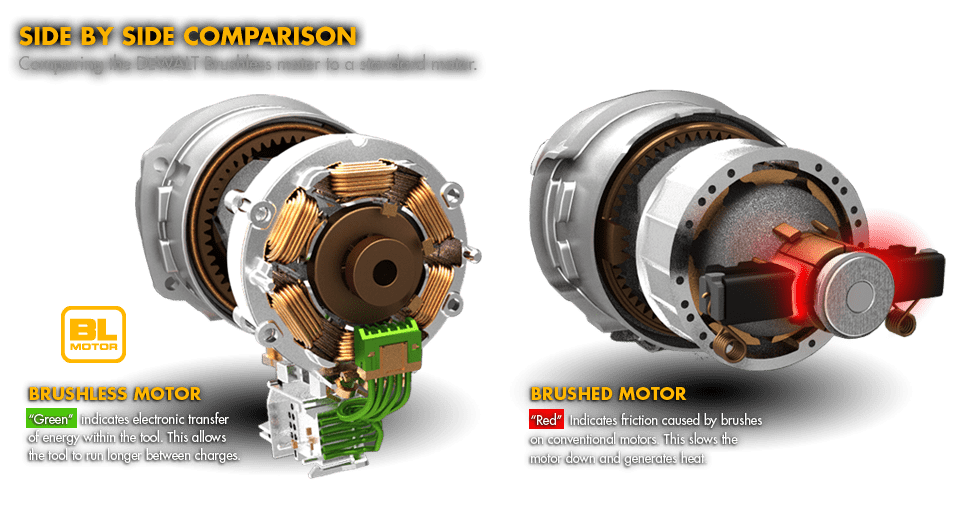Difference Between Brushless Motor and Brushed Motor
The Major Difference between Between Brushless Motor and Brushed Motor are explained as follows:
Brushed Motor:
- A motor is an electrical device that converts electricity into mechanical force or motion. In other words, a motor is a machine that transforms electric power into mechanical power. There are different types of motors available including brushless and brushed motors.
- Brushed motors are the most common type of DC motor. They have a spinning armature with copper coils that interact with magnets to create rotational force. The commutator on the spinning armature continually switches the current flowing through the coils so that it flows in the correct direction. This ensures that the rotor (armature) continues spinning in the correct direction.
- Brushed motors are generally low-cost and reliable when a constant speed is required, but they require regular maintenance to ensure long-term reliability. The brushes provide two main functions:
- To collect electric current from stationary wire commutators on the rotating armature. and to change the direction of the current to spin the armature in the correct direction.
- A brushed motor uses brushes to change the direction of current flow, whereas a brushless motor doesn’t need brushes as it has a Hall effect sensor to detect the position of the rotor.
- Brushed motors are generally low-cost and reliable when a constant speed is required.
- A brushed motor uses brushes to change the direction of current flow, whereas a brushless motor doesn’t need brushes as it has a Hall effect sensor to detect the position of the rotor.
- Brushed motors are high in friction losses and greater power consumption compared to a brushless motor where the circumference is smaller at only one end of the armature.
- Brushed motors generate less wasted power when operating at lower speeds (e.g., when starting from rest).
Brushless Motor:
- Brushless motors are permanent magnet motors that produce motion by pushing or pulling on something with a spinning rotor.
- Brushless motors produce less noise than brushed motors, and they require no maintenance because there are no brushes or commutators needed like in brushed motors.
- Brushless motors are more expensive than brushed motors.
- Brushless motors are Higher efficiency than brushed motors.
- Brushless motors are a Longer motor life than brushed motors.
- Brushless motors are Faster control response and speed.
- Brushless motors can run at higher speeds for longer periods.
- Brushless motors require more power than brushed motors to spin the rotor, but brushless motors offer benefits such as less noise and vibration which makes them very popular in high-performance electric vehicles such as model racing cars.
- Brushless motors don’t need to be lubricated, which is good because they tend to be more sensitive to dust and contamination than brushed motors.
- Brushless motors are often used in computers running robotic servomechanisms, 3D printers, CNC machines, electric bikes, and cars mostly because of their high torque capabilities.
- Brushless motors are typically found in electric vehicles. meaning that they produce on-demand more power while using less battery or having a longer lifespan on the same amount of charge.
Conclusion:
Which one to choose for your needs depends on the specific application. If you need a motor that is low cost and has a constant speed, then go for the brushed motor. If you need a more efficient motor, has a longer life and faster control response and speed, then go for a brushless motor. In general, brushless motors are better than brushed motors, but it depends on what you are looking for in a motor.



